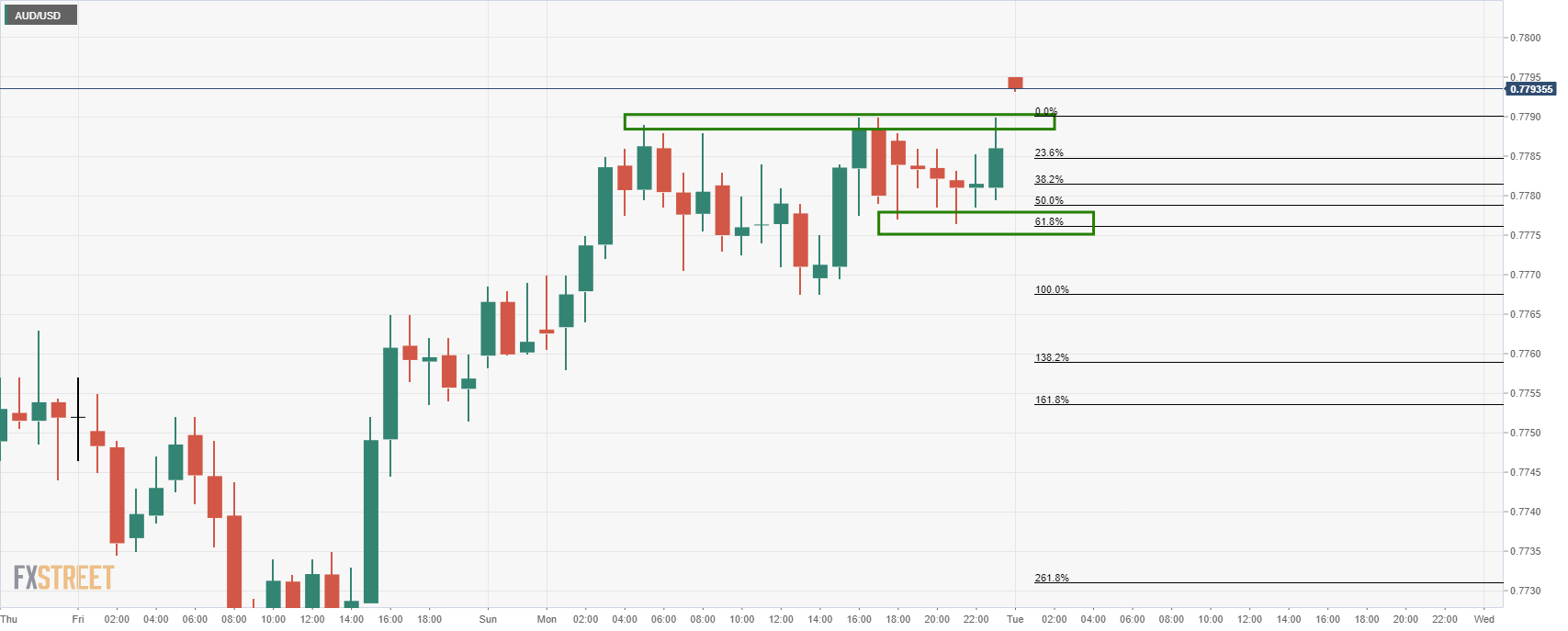According to the minutes of the latest Reserve Bank of Australia meeting, the central bank believes it will take a significant and sustained tightening in the labour market to lift inflation to more comfortable levels, a tough task that could take years to achieve.
More minutes
- "Very significant" monetary support to be needed for some time.
- Cash rate to be kept at 10 bps as long as is necessary.
- Will not raise cash rate until inflation sustainably in 2-3% target band.
- Does not expect to reach targets for unemployment, inflation until 2024 at the earliest.
- A sustained period of labour market tightness needed to lift wage growth, inflation.
- Liaison suggested some time before wage freezes to end, public sector pay also restrained.
- The board concluded ending RBA bond-buying would put "significant" upward pressure on A$.
- A$ "noticeably" lower than would have been without November stimulus package.
- The board noted RBA balance sheet to GDP still lower than most other advanced economies.
- Benefits from low rates outweighed risks from more leverage, rising house prices.
- Few signs of deterioration in home lending standards, would be monitored closely.
Minutes of the Reserve Bank of Australia's (RBA) February policy meeting released on Tuesday showed the Board recognised that wage growth had been too subdued for years before the pandemic imposed its own restraints on pay.
There was less expected from the minutes this time around given that the central bank's governor, Philip Lowe, has spoken extensively since the Board meeting.
As a result, AUD is little changed on the release.
AUD/USD was trading at 0.7790 on the release before popping to a fresh high of 0.7794 soon after the minutes were digested.
Description of the RBA minutes
The minutes of the Reserve Bank of Australia meetings are published two weeks after the interest rate decision.
The minutes give a full account of the policy discussion, including differences of view.
They also record the votes of the individual members of the Committee.
Generally speaking, if the RBA is hawkish about the inflationary outlook for the economy, then the markets see a higher possibility of a rate increase, and that is positive for the AUD.
Information on these pages contains forward-looking statements that involve risks and uncertainties. Markets and instruments profiled on this page are for informational purposes only and should not in any way come across as a recommendation to buy or sell in these assets. You should do your own thorough research before making any investment decisions. FXStreet does not in any way guarantee that this information is free from mistakes, errors, or material misstatements. It also does not guarantee that this information is of a timely nature. Investing in Open Markets involves a great deal of risk, including the loss of all or a portion of your investment, as well as emotional distress. All risks, losses and costs associated with investing, including total loss of principal, are your responsibility. The views and opinions expressed in this article are those of the authors and do not necessarily reflect the official policy or position of FXStreet nor its advertisers. The author will not be held responsible for information that is found at the end of links posted on this page.
If not otherwise explicitly mentioned in the body of the article, at the time of writing, the author has no position in any stock mentioned in this article and no business relationship with any company mentioned. The author has not received compensation for writing this article, other than from FXStreet.
FXStreet and the author do not provide personalized recommendations. The author makes no representations as to the accuracy, completeness, or suitability of this information. FXStreet and the author will not be liable for any errors, omissions or any losses, injuries or damages arising from this information and its display or use. Errors and omissions excepted.
The author and FXStreet are not registered investment advisors and nothing in this article is intended to be investment advice.
Recommended content
Editors’ Picks
EUR/USD stays in positive territory above 1.0850 after US data

EUR/USD clings to modest daily gains above 1.0850 in the second half of the day on Friday. The improving risk mood makes it difficult for the US Dollar to hold its ground after PCE inflation data, helping the pair edge higher ahead of the weekend.
GBP/USD stabilizes above 1.2850 as risk mood improves

GBP/USD maintains recovery momentum and fluctuates above 1.2850 in the American session on Friday. The positive shift seen in risk mood doesn't allow the US Dollar to preserve its strength and supports the pair.
Gold rebounds above $2,380 as US yields stretch lower

Following a quiet European session, Gold gathers bullish momentum and trades decisively higher on the day above $2,380. The benchmark 10-year US Treasury bond yield loses more than 1% on the day after US PCE inflation data, fuelling XAU/USD's upside.
Avalanche price sets for a rally following retest of key support level

Avalanche (AVAX) price bounced off the $26.34 support level to trade at $27.95 as of Friday. Growing on-chain development activity indicates a potential bullish move in the coming days.
The election, Trump's Dollar policy, and the future of the Yen

After an assassination attempt on former President Donald Trump and drop out of President Biden, Kamala Harris has been endorsed as the Democratic candidate to compete against Trump in the upcoming November US presidential election.
